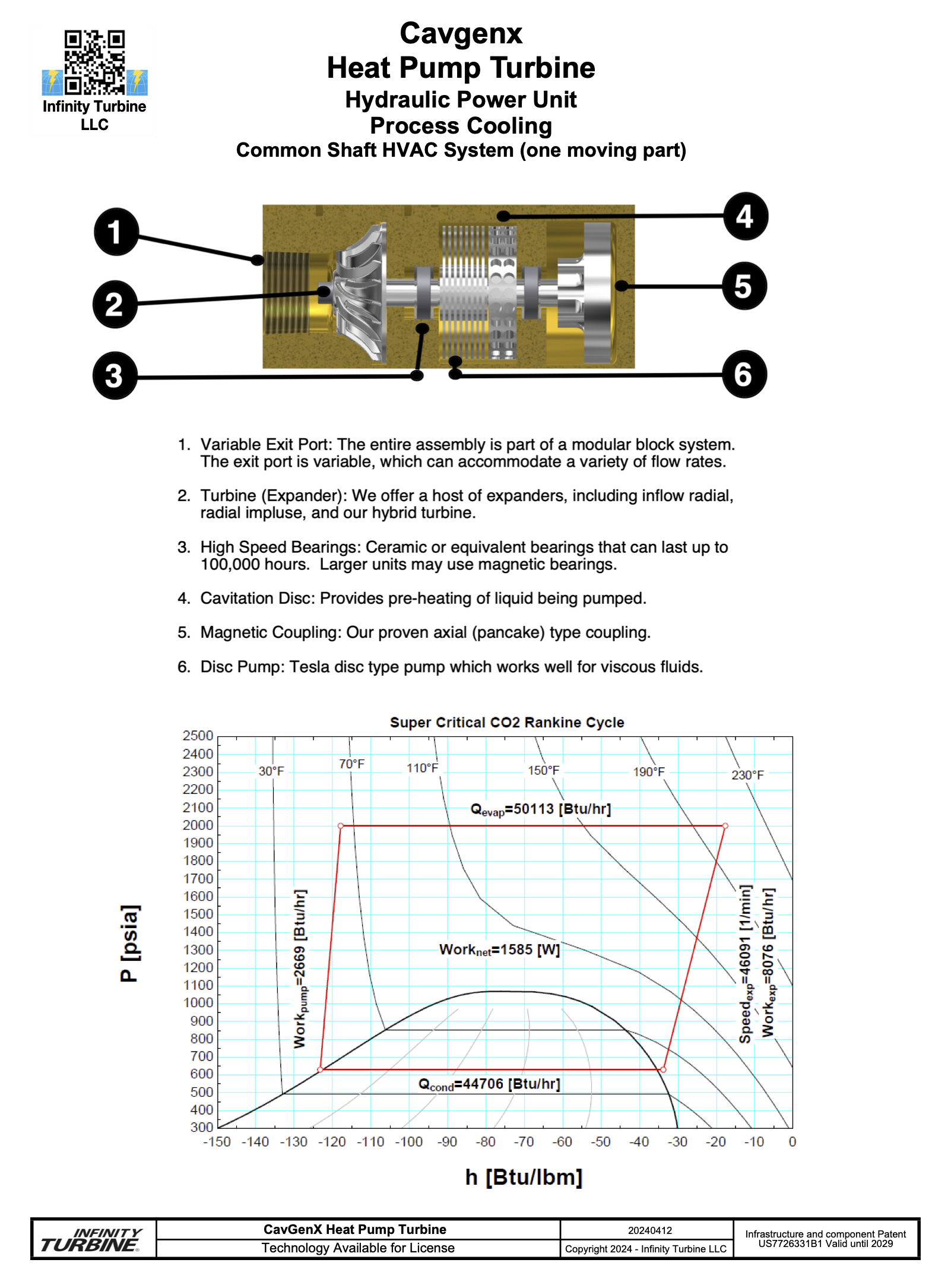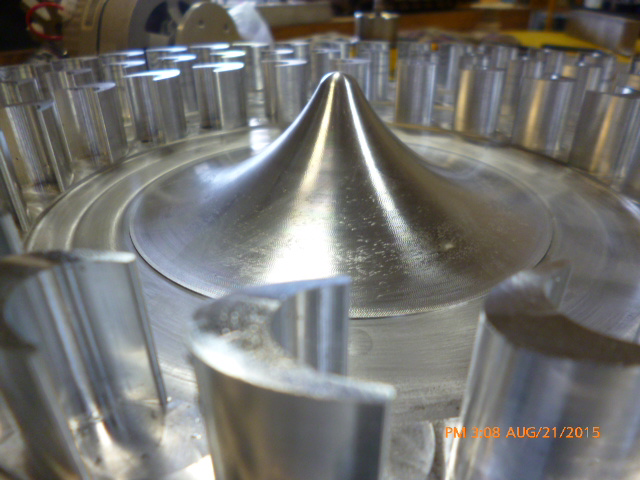

Salgenx LLC • Sales • Licensing • Consulting TEL: 1-608-238-6001 Email: greg@salgenx.com
Zinc Based Electrodes for Chlorine Flow Battery Offer Higher Voltage and Better Energy Density Offering ultra-low cost build and up to 40,000 cycles at 93 percent efficiency... Zinc is available in rolls at Home Depot
Zinc-powered, saltwater-driven — the affordable flow battery redefining grid storage. Low-cost zinc electrodes meet limitless saltwater energy.
A breakthrough in sustainable storage — zinc and saltwater in perfect balance. From seawater to megawatt — zinc makes energy storage clean and cheap.
No lithium, no fire risk, no compromise — just sustainable power. Turning saltwater into savings — one zinc electrode at a time.
The lithium alternative the world’s been waiting for. Zinc is the new gold in battery innovation.
$35 Tax Credit per kWh Until 2030 Reliable. Recyclable. Remarkably affordable. That’s zinc-based energy.
IT1000 Portable Power for Data Centers 1 MW Clean Power using Natural Gas, Solar Thermal, or Waste Heat

|

|
Press Releases For the press releases for Salgenx Salt Water Battery, please follow the link below. |

Flow Battery Comparison Chart |

|
How the Salt Water Flow Battery Works Operation:1. An aqueous solution of NaCl is set in a tank and an organic liquid with high solubility of Chlorine gas and low miscibility in water is set in another tank.2. Exits from these tanks flow in separate tubing and a pump sets the flow rate for each phase.3. These two separate flows enter into a single flow (the reaction zone of the cell) and the flows will pass through and over their respective electrodes. The exit of these cells will be a flow combining the two flows. [Proprietary Device] separates the two flows and they return to their respective tanks.4. After a steady state operation is achieved, the battery applies the voltage being provided from the power source. The battery is now charging and chlorine gas is being produced in the solution. A. On the working electrode, [Proprietary catalyst] particles promote the well researched Chloride/Chlorine oxidation. Chloride ions from the NaCl aqueous solution oxidize into chlorine gas. This gas is then stripped from the aqueous phase by the organic phase.B. On the counter electrode sodium ions are ejected from an active electrode of [Proprietary catalyst] into the aqueous solution and the electrode transitions to [Proprietary catalyst]. This boosts the average cell voltage from 1.3V to 1.8V5. State of charge (SOC) is tracked by an inline concentration sensor of the organic phase. Once it reaches between 90-95 percent of its solubility limit of Chlorine gas the battery is considered charged. Pumping operation could cease. At no point is Chlorine gas outside of the closed loop system. A Chlorine sensor is provided and communicates instantaneously to command and control processor. In the case of a power failure, the system is flooded with NaCl to neutralize any Chlorine.6. The energy storage of this design comes from a large amount of trapped Chlorine gas and dissolved sodium ions. Due to the separation of the tanks, discharge over time should be incredibly limited.7. During discharge, the pumps are turned back on and a steady state operation is achieved. Then an opposite voltage is applied and the dissolved chlorine gas returns to chloride ions and the discharge is started. A. On the working electrode, dissolved chlorine gas reacts on the [Proprietary catalyst] particles back into chloride ions. The low solubility of chloride in organic phases means these ions readily return to the aqueous phase. This is a safety factor which is inherent to the closed-loop system. B. On the counter electrode sodium inserts back into the active material of the electrode.8. Once again State of Charge (SOC) is tracked by the now diminishing Chlorine concentration in the organic phase. Once it reaches 0-5 percent of its charged value, the battery is considered discharged. Pumping operation ceases.
|

NACS North American Charging Standard EV (image courtesy of Tesla) |
NACS Tesla Plug for Charging AC and DC Salgenx will be offering the NACS Tesla plug as part of its connectivity options to allow direct charging of electric vehicles.From @Teslamotors #Tesla: With more than a decade of use and 20 billion EV charging miles to its name, the Tesla charging connector is the most proven in North America, offering AC charging and up to 1 MW DC charging in one slim package. It has no moving parts, is half the size, and twice as powerful as Combined Charging System (CCS) connectors.Tesla opens up its charging connector in a bid to become the North American standard |

Search 3000 Pages of Lithium Ion Battery Fire Hazard Information |

Cavgenx Heat Pump Turbine |
Cavgenx Heat Pump Turbine The heat pump turbine is a product which has been in development for some time. It is a hybrid between the Brayton Cycle and Organic Rankine Cycle.This amazing device can also be used simultaneously as a heat pump, which only leverages its use in range extending for electric cars.The unique part of this turbine is that it can be closed-loop using CO2 as the working fluid taking advantage of sonochemistry (cavitation). Most refrigerants can be used as the working fluid for the Cavgenx heat pump turbine. The benefit is the ability to perform work using hydraulics and simultaneous cooling of the refrigerant.Ideal for industries leveraging both hydraulic and refrigeration systems, this approach promises enhanced efficiency and compact design.The system can also be used for lithium harvesting and refining by the use of the spinning disc reactor, which is a add-on element to the device.Making AI Less Thirsty: Uncovering and Addressing the Secret Water Footprint of AI Models |

Infinity Turbine Radial Outflow Turbine Generator which can be used simultaneously as a heat pump |
As a simultaneous Thermal Storage Device TES Considered a hybrid between a standard flow battery and a thermal storage device, the battery provides simultaneous heat or cold liquid storage as well as electrical energy storage.The Cogen Battery has a variety of applications which include:-storage of thermal energy (heating or cooling) from unused thermal resources-storage of electrical power for backup power and grid strength-utility grid power rate mining opportunities to store off-peak low cost power for later use during demand (on-peak) hours-storage of thermal energy for Organic Rankine Cycle (ORC) power production while simultaneously storing the electrical output from the turbine generator-using off-peak low cost power to make heating and cooling for later use-reducing peak demand utility rates by peak energy shaving
|

Salt Water Flow Battery Levelized Cost of Storage |
Levelized Cost of Storage LCOS The superiority of Salt Water flow chemistry: lower levelized cost of storage (LCOS).Utility ScaleThe flexibility of large scale battery storage for wind and solar will prioritize grid stability. Salgenx salt water flow batteries meet these criteria with safe and nontoxic technology that is easier to site and permit than the competition with less maintenance and lower acquisition costs.Micro grids, DERMS and VPPsDistributed energy resources to maximize capacity, backup, and stability are a must. Stand-alone micro grids, oil and gas, or utilities balancing DERs all present ideal use cases for Salgenx salt water flow battery technology.Commercial and Industrial (C&I)Rapid growth in energy storage for commercial and industrial sites have been forecasted by industry experts. With Salgenx long-duration energy storage, you can manage demand charges and time-based rates while ensuring energy security. Buy low off-peak power and use during peak-demand. |

With every 20 to 50 AI queries, approximately half a liter of fresh water is lost in the form of steam emissions |
Note: The Cavgenx system is designed to be integrated into the Salgenx battery, which can be used as a heat sink for AI data center cooling and battery backup.Introduction to Data Center Cooling which uses Evaporative Cooling and lots of WaterIn our digitally-driven world, artificial intelligence (AI) has become an integral part of our daily lives, from voice assistants and recommendation algorithms to chatbots and language models. We often use AI systems without realizing the environmental impact they may have. A recent study conducted by the University of California, Riverside, sheds light on a concerning aspect of AI technology: its hidden water footprint. Each time you run a ChatGPT artificial intelligence query, you unknowingly contribute to the depletion of our already overstressed freshwater resources.The Water Footprint of AIThe research from the University of California, Riverside, has revealed a startling fact: running AI queries that rely on cloud computations in data processing centers consumes significant amounts of freshwater resources. With every 20 to 50 queries, approximately half a liter (around 17 ounces) of fresh water is lost in the form of steam emissions. This might not seem like much on an individual basis, but the cumulative impact of billions of AI queries worldwide is a cause for concern...
Making AI Less Thirsty: Uncovering and Addressing the Secret Water Footprint of AI Models |

|
Comprehensive Guide to Lithium-Based Energy Storage Systems: Risks, Safety, and Best Practices This comprehensive report provides a technical analysis of large-scale lithium energy storage systems, focusing on 1 MW+ containerized solutions. It delves into the risks of thermal runaway, fire hazards, and toxic gas emissions, along with strategies for fire prevention, monitoring, and site-specific installation considerations. Additionally, it covers the impact of lithium fires on insurance costs and outlines best practices for safety, scalability, and operational efficiency. Emerging technologies and regulatory frameworks are also discussed to provide actionable insights for manufacturers, operators, and policymakers. |
| CONTACT TEL: +1 608-238-6001 (Chicago Time Zone) Email: greg@salgenx.com | AMP | PDF | Salgenx is a division of Infinity Turbine LLC |